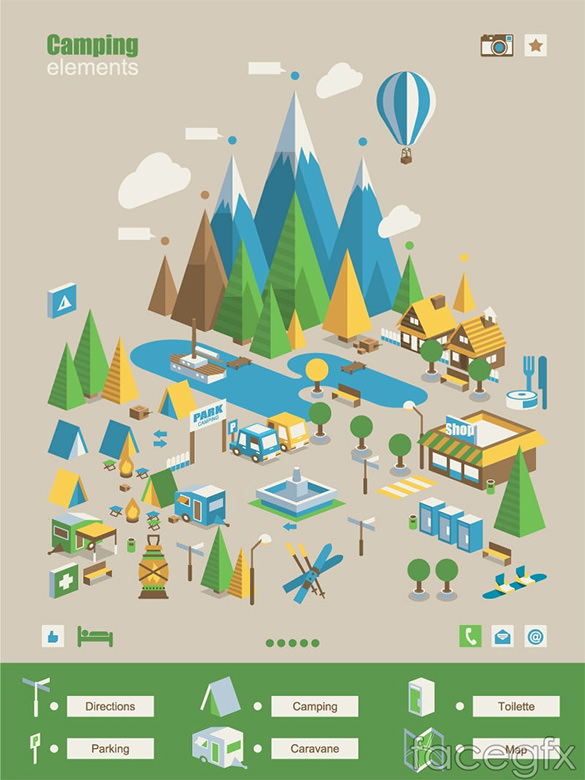Bell outdoors tents are ending up being significantly prominent as functional, fashionable sanctuaries for outdoor camping and glamping. Yet what's the history behind this enduring style?
How do I protect my tent from rain?
Henry Hopkins Sibley patented the single-pole cone-shaped outdoor tents that we understand as a bell tent. However, he abandoned to the Confederacy and never received his aristocracies.
Eventually, someone else included brief walls to the cone cover and developed what we now called a bell tent.
Beginnings
The popularity of bell outdoors tents is growing, and they're currently a staple at outdoor camping festivals and as fashionable backyard retreats. Their sizable interiors provide a versatile home from home environment that's excellent for households and groups of close friends, while the circular design helps with stability in solid winds.
The design of the modern-day bell camping tent can be mapped back to armed forces tents made use of by European militaries during the Crimean Battle in 1853-1856. Then, in America, a soldier called Henry Hopkins Sibley patented a comparable structure that attracted inspiration from American Tipis.
Both styles are still in use today. Nevertheless, Sibley tents vary from their more current cousins in that they have side wall surfaces and an increased bigger entryway. Sibley outdoors tents also rely upon a single main pole for support that makes them easier to establish however restricts configuration choices.
Purpose
Bell camping tents' unique shape and sizable interiors make them the excellent choice for a variety of outdoor tasks. Whether you're hosting a yard camping celebration, glamping at a remote all-natural retreat or going on an impressive fantasy-inspired adventure, the adaptability of these tents guarantees that your experience will certainly be comfortable and elegant.
The bell-shaped outdoor tents was originally patented in 1856 by Henry Hopkins Sibley, who had developed the layout after observing Indigenous American tipi tents. Nevertheless, he surrendered from the US Army at the episode of the Civil Battle, forfeiting his legal rights to future aristocracies.
Since then, the style has actually come to be a staple of many glamping experiences. These glamorous outdoors tents often feature luxurious bed linens and en-suite bathrooms, providing campers the possibility to enjoy nature without compromising convenience.
Design
In the modern, bell camping tents have actually experienced a revival in popularity, as people look for a much more immersive exterior experience. They are made use of in a variety of setups, consisting of outdoor camping, glamping, and events. Their distinct shape, large insides, and reasonably easy assembly make them a prominent option for those looking for a classy, historical panache to their outdoor experiences.
The distinct form of a bell camping tent develops high ceilings and enough headroom, making it comfortable to stand up in and move around. Additionally, the center pole is not put near the entryway of the camping tent, permitting even more personal privacy and space inside the sanctuary.
The bell camping tent design traces back to an American soldier named Henry Hopkins Sibley, who was motivated by Indigenous American tipi camping tents when creating his variation of the bell outdoor tents in 1856. His style was a considerable improvement over conventional army camping tents, which were difficult to transfer because of their challenging building.
Products
In modern times, Bell Tents are crafted from exceptional products that are created for resilient durability. This is why they are a preferred choice among entertainment campers, festival-goers, and glampers alike.
In the 19th century, an US Military officer named Henry Hopkins Sibley adjusted typical tents right into what is currently called the modern bell outdoor tents. He based his layout on Native American Tipi structures, adding brief wall surfaces to the central pole structure that hot tent stove made it extra steady.
Today, polycotton canvas is an usual material used in the construction of bell outdoors tents. This mix of cotton and polyester offers a variety of advantages, consisting of breathability, superior climate resistance, and simpler maintenance than pure cotton canvas. This fabric is also sturdy and abrasion-resistant. It is thicker than many nylon materials, nevertheless, which can make it hefty and more costly than regular tents.
Contemporary
In contemporary, the popularity of Bell Tents has actually taken off thanks to glamping sites and festivals providing these sizable tents for couples, groups and families to appreciate. The visual allure and sturdiness of these round tents are attracting numerous campers.
Whether it be rain or wind, these camping tents hold their own against the aspects. Normally, they're made with canvas that is dealt with to secure against moisture, mildew and UV rays.
Do wall tents have floors?
It isn't clear specifically when these tents were designed, but it's commonly known that they're a variation of a Sibley outdoor tents - named after Henry Hopkins Sibley, that adapted the layout of the American Indian tipi. It is believed that whoever included brief wall surfaces to Sibley's cone canopy was in charge of the creation of the bell camping tent as we understand it today.
